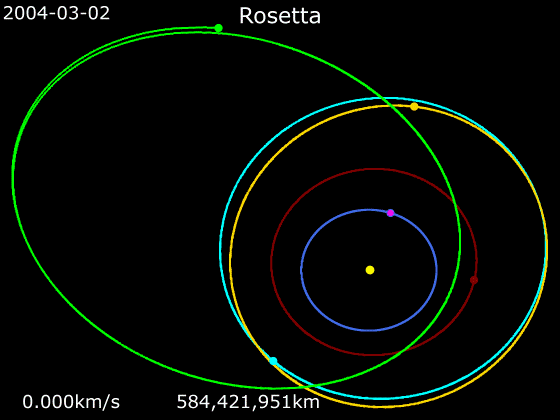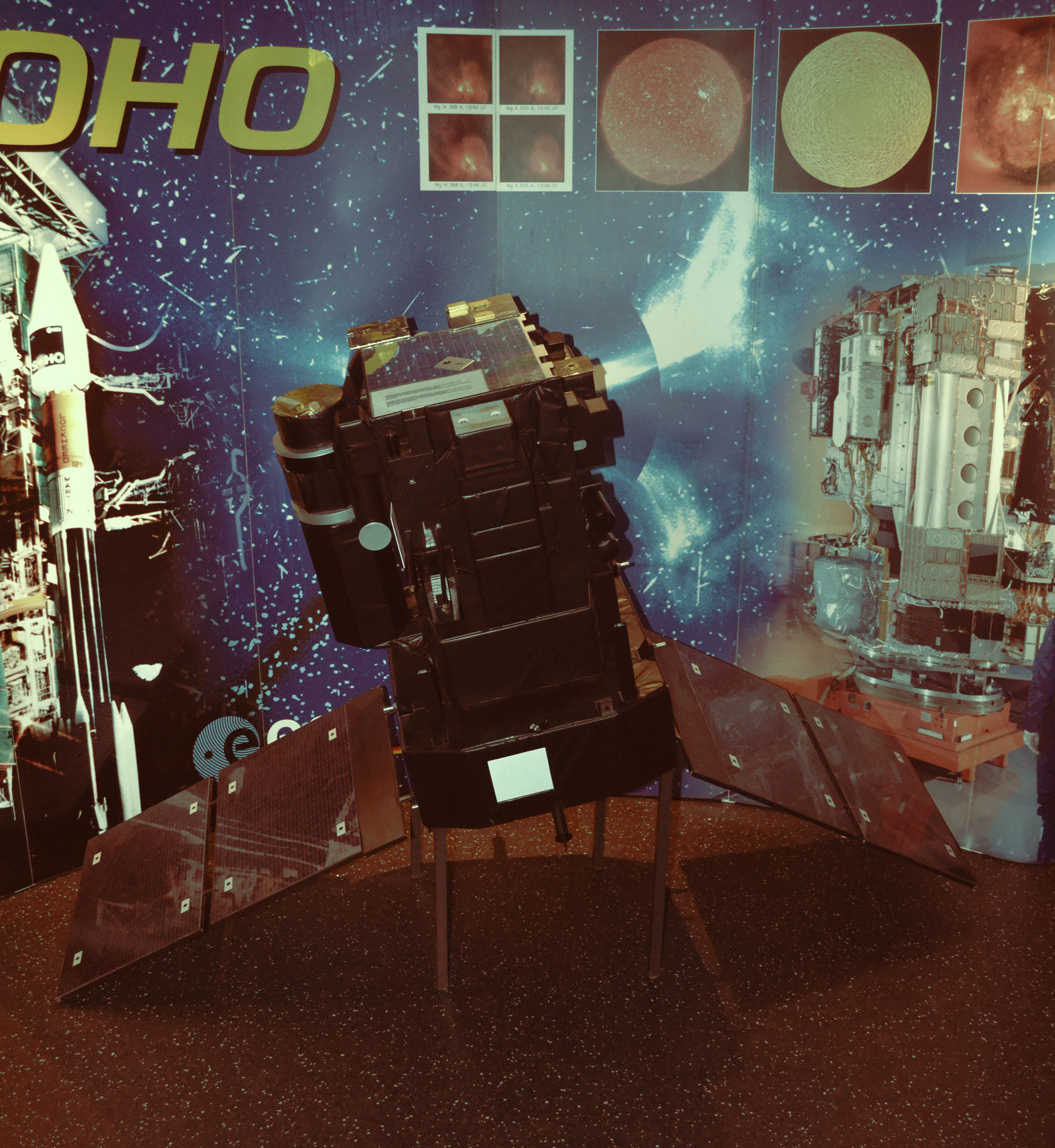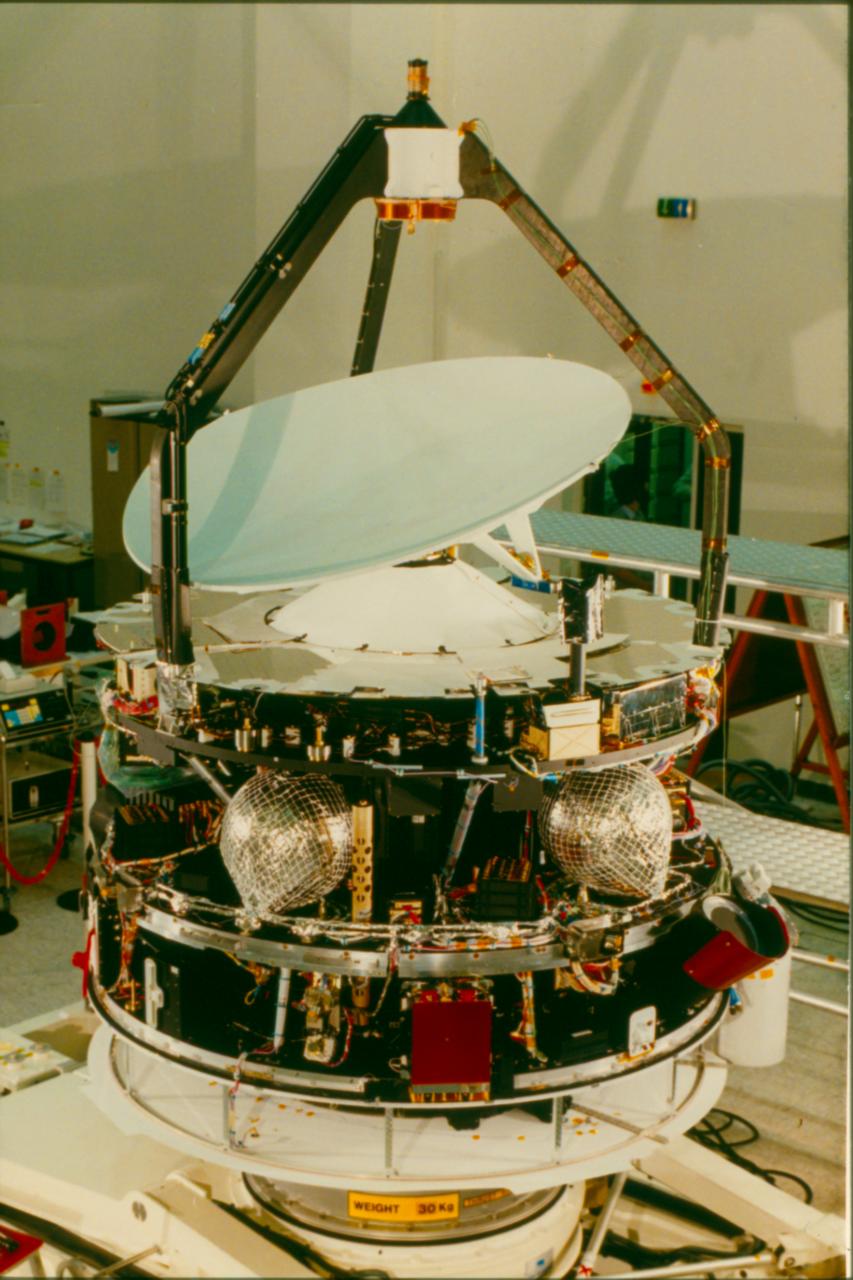|
Matra Marconi Space
Matra Marconi Space (MMS) was a Franco-British aerospace company. History Matra Marconi Space was established in 1990 as a joint venture between the space and telecommunication division of the French conglomerate Matra (Matra Espace) and that of the British GEC group ( Marconi Space Systems). The new company was announced in December 1989 and was owned 51% by Matra and 49% by GEC-Marconi. It would have annual sales of £300 million, with £8.7 million in assets from Marconi Space Systems and £10.7 million in assets from Matra Espace. Claude Goumy, the Managing Director of Matra Espace was the first Managing Director. The first deputy Managing Director was Richard Wignall, the former Managing Director of Marconi Space Systems. The space industry was important to France - almost half the budget of the European Space Agency (ESA) came from the French government. Acquisitions In 1991, British Aerospace was discussing with MMS how to merge their space interests, as well as ... [...More Info...] [...Related Items...] OR: [Wikipedia] [Google] [Baidu] |
DaimlerChrysler Aerospace
DASA (officially Deutsche AeroSpace AG, later Daimler-Benz AeroSpace AG, then DaimlerChrysler AeroSpace AG) was a German aerospace manufacturer. It was created during 1989 as the aerospace subsidiary arm of Daimler-Benz AG (later DaimlerChrysler) from 1989. The company acquired rival manufacturer Messerschmitt-Bölkow-Blohm (MBB) that same year, integrating it along with its other aerospace interests, MTU München, and Dornier Flugzeugwerke, by 1992. The company's existence was relatively brief due to the peace dividend of the 1990s having motivated industry-wide consolidation. During July 2000, DASA merged with Aérospatiale-Matra of France and Construcciones Aeronáuticas SA (CASA) of Spain to form EADS, which has since rebranded itself as ''Airbus Group''. History DASA (from ''Deutsche Aerospace Aktiengesellschaft'') was founded on 19 May 1989 by the merger of Daimler-Benz's aerospace interests, MTU München, and Dornier Flugzeugwerke. During December 1989, Daimler- ... [...More Info...] [...Related Items...] OR: [Wikipedia] [Google] [Baidu] |
Cheshire
Cheshire ( ) is a Ceremonial counties of England, ceremonial county in North West England. It is bordered by Merseyside to the north-west, Greater Manchester to the north-east, Derbyshire to the east, Staffordshire to the south-east, and Shropshire to the south; to the west it is bordered by the Welsh counties of Flintshire and Wrexham County Borough, Wrexham, and has a short coastline on the Dee Estuary. The largest settlement is Warrington. The county has an area of and had a population of 1,095,500 at the 2021 United Kingdom census, 2021 census. The areas around the River Mersey in the north of the county are the most densely populated, with Warrington, Runcorn, Widnes, and Ellesmere Port located on the river. The city of Chester lies in the west of the county, Crewe in the south, and Macclesfield in the east. For Local government in England, local government purposes Cheshire comprises four Unitary authorities of England, unitary authority areas: Cheshire East, Cheshire We ... [...More Info...] [...Related Items...] OR: [Wikipedia] [Google] [Baidu] |
Marconi Electronic Systems
Marconi Electronic Systems Limited (MES), or GEC-Marconi as it was until 1998, was the defence arm of General Electric Company (GEC). It was split off from GEC and bought by British Aerospace (BAe) on 30 November 1999 to form BAE Systems. GEC then renamed itself Marconi plc. MES exists today as BAE Systems Electronics Limited, a subsidiary of BAE Systems, but the assets were rearranged elsewhere within that company. MES-related businesses include BAE Systems Submarine Solutions, BAE Systems Surface Ships, BAE Systems Insyte and Selex ES (now a part of Leonardo). History The Marconi Company had been formed by Guglielmo Marconi in 1897 in Britain, originally under the name of The Wireless Telegraph & Signal Company. Following GEC's acquisition of Marconi as part of English Electric in 1968, the Marconi brand was used for its defence businesses, e.g. Marconi Space & Defence Systems (MSDS), Marconi Underwater Systems Ltd (MUSL). When it was bought by General Electric, ... [...More Info...] [...Related Items...] OR: [Wikipedia] [Google] [Baidu] |
Rosetta (spacecraft)
''Rosetta'' was a space probe built by the European Space Agency that launched on 2 March 2004. Along with ''Philae'', its lander module, ''Rosetta'' performed a detailed study of comet 67P/Churyumov–Gerasimenko (67P). During its journey to the comet, the spacecraft performed flybys of Earth, Mars, and the asteroids 21 Lutetia and 2867 Šteins. It was launched as the third cornerstone mission of the ESA's Horizon 2000 programme, after ''SOHO' Cluster'' and '' XMM-Newton''. On 6 August 2014, the spacecraft reached the comet and performed a series of manoeuvers to eventually orbit the comet at distances of . On 12 November, its lander module ''Philae'' performed the first successful landing on a comet, though its battery power ran out two days later. Communications with ''Philae'' were briefly restored in June and July 2015, but due to diminishing solar power, ''Rosetta'' communications module with the lander was turned off on 27 July 2016. On 30 September 2016, the ''Rosett ... [...More Info...] [...Related Items...] OR: [Wikipedia] [Google] [Baidu] |
Ariane 5
Ariane 5 is a retired European heavy-lift space launch vehicle operated by Arianespace for the European Space Agency (ESA). It was launched from the Guiana Space Centre (CSG) in French Guiana. It was used to deliver payloads into geostationary transfer orbit (GTO), low Earth orbit (LEO) or further into space. The launch vehicle had a streak of 82 consecutive successful launches between 9 April 2003 and 12 December 2017. Since 2014, Ariane 6, a direct successor system, first launched in 2024. The system was designed as an expendable launch vehicle by the ''Centre national d'études spatiales'' (CNES), the French government's space agency, in cooperation with various European partners. Despite not being a direct derivative of its predecessor launch vehicle program, it was classified as part of the Ariane rocket family. Aérospatiale, and later ArianeGroup, was the prime contractor for the manufacturing of the vehicles, leading a multi-country consortium of other European con ... [...More Info...] [...Related Items...] OR: [Wikipedia] [Google] [Baidu] |
Cluster (spacecraft)
Ariane flight V88 was the failed maiden flight of the Arianespace Ariane 5 rocket, vehicle no. 501, on 4 June 1996. It carried the Cluster spacecraft, a constellation of four European Space Agency research satellites. The launch ended in failure due to multiple errors in the software design: dead code, intended only for Ariane 4, with inadequate protection against integer overflow led to an Exception handling, exception handled inappropriately, halting the whole otherwise unaffected inertial navigation system. This caused the rocket to veer off its flight path 37 seconds after launch, beginning to disintegrate under high aerodynamic forces, and finally self-destructing via its automated flight termination system. The failure has become known as one of the most infamous and expensive software bugs in history. The failure resulted in a loss of more than US$370 million. Launch failure The Ariane 5 code reuse, reused the code from the inertial navigation system, inertial ... [...More Info...] [...Related Items...] OR: [Wikipedia] [Google] [Baidu] |
Solar And Heliospheric Observatory
The Solar and Heliospheric Observatory (SOHO) is a European Space Agency (ESA) spacecraft built by a European industrial consortium led by Matra Marconi Space (now Airbus Defence and Space) that was launched on a Lockheed Martin Atlas IIAS launch vehicle on 2 December 1995, to study the Sun. It has also discovered more than 5,000 comets. It began normal operations in May 1996. It is a joint project between the European Space Agency (ESA) and NASA. SOHO was part of the International Solar Terrestrial Physics Program (ISTP). Originally planned as a two-year mission, SOHO continues to operate after 29 years in space; the mission has been extended until the end of 2025, subject to review and confirmation by ESA's Science Programme Committee. In addition to its scientific mission, it is a main source of near-real-time solar data for space weather prediction. Along with Aditya-L1, Wind, Advanced Composition Explorer (ACE), and Deep Space Climate Observatory (DSCOVR), SOHO is one ... [...More Info...] [...Related Items...] OR: [Wikipedia] [Google] [Baidu] |
Envisat
Envisat ("Environmental Satellite") is a large Earth-observing satellite which has been inactive since 2012. It is still in orbit and considered space debris. Operated by the European Space Agency (ESA), it was the world's largest civilian Earth observation satellite. It was launched on 1 March 2002 aboard an Ariane 5 from the Guyana Space Centre in Kourou, French Guiana, into a Sun synchronous polar orbit at an altitude of 790 ± 10 km. It orbits the Earth in about 101 minutes, with a repeat cycle of 35 days. After losing contact with the satellite on 8 April 2012, ESA formally announced the end of Envisat's mission on 9 May 2012. Envisat cost 2.3 billion Euro (including 300 million Euro for 5 years of operations) to develop and launch. The mission has been replaced by the Sentinel series of satellites. The first of these, Sentinel 1, has taken over the radar duties of Envisat since its launch in 2014. Mission Envisat was launched as an Earth observation ... [...More Info...] [...Related Items...] OR: [Wikipedia] [Google] [Baidu] |
Giotto (spacecraft)
''Giotto'' was a European robotic spacecraft mission from the European Space Agency. The spacecraft flew by and studied Halley's Comet and in doing so became the first spacecraft to make close up observations of a comet. On 13 March 1986, the spacecraft succeeded in approaching Halley's nucleus at a distance of 596 kilometers. It was named after the Early Italian Renaissance painter Giotto di Bondone. He had observed Halley's Comet in 1301 and was inspired to depict it as the star of Bethlehem in his painting ''Adoration of the Magi'' in the Scrovegni Chapel. Mission Development Members of the ESA’s Solar System Working Group started investigating a mission to Halley’s comet in 1977 before rejecting it in August 1978 in favour of a lunar orbiter. Shortly afterwards this was reversed by the Science Advisory Committee and the ESA started to study a joint mission with NASA. This mission was to be the International Comet Mission consisting of a carrier NASA probe and smalle ... [...More Info...] [...Related Items...] OR: [Wikipedia] [Google] [Baidu] |
Hubble Space Telescope
The Hubble Space Telescope (HST or Hubble) is a space telescope that was launched into low Earth orbit in 1990 and remains in operation. It was not the Orbiting Solar Observatory, first space telescope, but it is one of the largest and most versatile, renowned as a vital research tool and as a public relations boon for astronomy. The Hubble Space Telescope is named after astronomer Edwin Hubble and is one of NASA's Great Observatories program, Great Observatories. The Space Telescope Science Institute (STScI) selects Hubble's targets and processes the resulting data, while the Goddard Space Flight Center (GSFC) controls the spacecraft. Hubble features a mirror, and its five main instruments observe in the ultraviolet, visible spectrum, visible, and near-infrared regions of the electromagnetic spectrum. Hubble's orbit outside the distortion of atmosphere of Earth, Earth's atmosphere allows it to capture extremely high-resolution images with substantially lower background lig ... [...More Info...] [...Related Items...] OR: [Wikipedia] [Google] [Baidu] |
Ulysses (spacecraft)
''Ulysses'' ( , ) was a Uncrewed spacecraft, robotic space probe whose primary mission was to orbit the Sun and study it at all latitudes. It was launched in 1990 and made three "fast latitude scans" of the Sun in 1994/1995, 2000/2001, and 2007/2008. In addition, the probe studied several comets. ''Ulysses'' was a joint venture of the European Space Agency (ESA) and the United States' NASA, National Aeronautics and Space Administration (NASA), under leadership of ESA with participation from Canada's National Research Council (Canada), National Research Council. The last day for mission operations on ''Ulysses'' was 30 June 2009. To study the Sun at all latitudes, the probe needed to change its orbital inclination and leave the Ecliptic, plane of the Solar System. To change the orbital inclination of a spacecraft to about 80° requires a large change in heliocentric velocity, the energy to achieve which far exceeded the capabilities of any launch vehicle. To reach the desired ... [...More Info...] [...Related Items...] OR: [Wikipedia] [Google] [Baidu] |
Interferometry
Interferometry is a technique which uses the ''interference (wave propagation), interference'' of Superposition principle, superimposed waves to extract information. Interferometry typically uses electromagnetic waves and is an important investigative technique in the fields of astronomy, Optical fiber, fiber optics, engineering metrology, optical metrology, oceanography, seismology, spectroscopy (and its applications to chemistry), quantum mechanics, Nuclear physics, nuclear and particle physics, plasma physics, interactome, biomolecular interactions, surface profiling, microfluidics, mechanical stress/strain measurement, velocimetry, optometry, and making holograms. Interferometers are devices that extract information from interference. They are widely used in science and industry for the measurement of microscopic displacements, refractive index changes and surface irregularities. In the case with most interferometers, light from a single source is split into two beams that ... [...More Info...] [...Related Items...] OR: [Wikipedia] [Google] [Baidu] |







